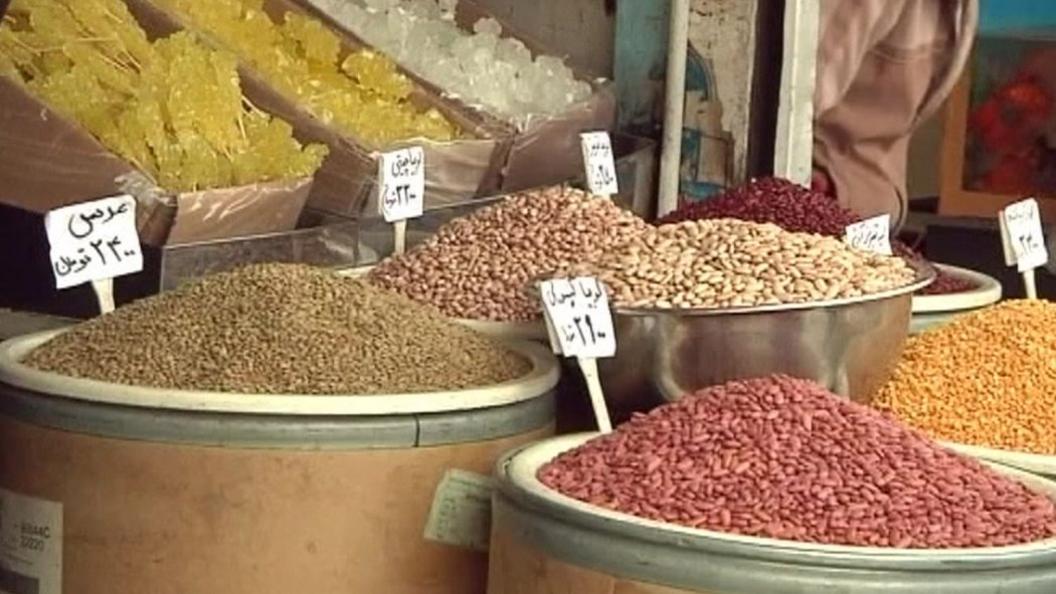Iran currency crisis: Sanctions detonate unstable rial
- Published
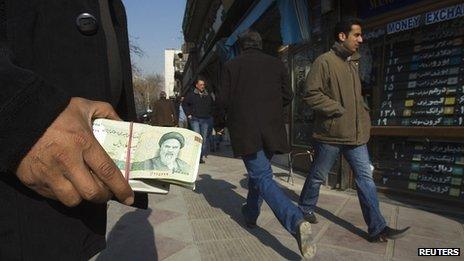
These are rollercoaster times for the moneychangers on the streets of Tehran
As international sanctions against Iran have tightened, the value of the Iranian currency has plummeted.
Ferdowsi Street in central Tehran is named after Ferdowsi, a poet who millennia ago compiled the Epic of Persian Kings and their eternal, mythical battle with evil.
The road is home to a long row of small shops where three types of money traders operate: "illegal" street money-changers, licensed exchange bureaux and, last but by no means least, big traders who move and shake the market with a phone call from their drab offices in the back alleys.
Street money-changers walk up and down the pavement shouting or whispering (depending on how much the government likes them at the time) the words "dollar, pound, euro". They offer good deals for small transactions, turning a few notes into rial for tourists or locals.
The exchange bureaux are licensed and monitored by Iran's central bank and handle bigger transactions. They are normally caught between a central bank that sometimes dictates exchange rates, and a market that works on more acceptable, basic rules of supply and demand.
The kingmakers, though, are the big traders of the back alleys, "the invisible mafia" as the government prefers to brand them, those who are blamed for everything that goes wrong with Iran's currency market.
In the recent crisis this so-called mafia is accused of scooping dollars out of the market in a move challenging government measures to contain the crisis.
Uncertain future
On Monday of last week, Iran's central bank opened a new foreign exchange centre to supply importers with a rate originally planned at 2% lower than that of the market.
The state-affiliated centre failed to respond to demand and, at the same time, hard currency normally pumped into the market by the central bank dried up, triggering fresh panic.
In the past seven days, Iran's rial has has lost 25% of its value; it is now, at best, worth only a quarter of what it was 18 months ago. And the freefall seems to have no end in sight.
Recent days in Iran have seen runs on foreign currencies and on gold - assets that are easily liquefied in the domestic market or transferable overseas.
On the one hand Iranians have lost their trust in their government's grip over the economy, and on the other they fear their country may end up in a military confrontation with Israel over its nuclear programme.
Therefore, they have good reason to change whatever they have in hand into currencies whose value is sustained internationally, or into gold bullion which they can throw into a suitcase if they want to hop aboard a flight and leave the country.
On Tuesday morning the window of licensed exchange bureaux showed rates never seen before: every US dollar bought 35,000 rials; currently the lowest valued currency per unit in the world.
Bank efforts
To try to prevent such excessive weakening of the rial, Iran's central bank has long been implementing a "managed float" of the currency. The backbone of the policy is to inject enough petrodollars into the market to keep the rial's value against the dollar high.
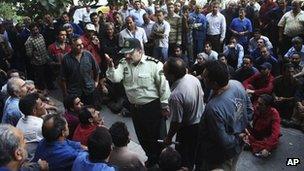
Economic instability triggers social tensions
It was fairly easy for the central bank to manipulate the value of the currency in the good old days when Iran was exporting up to 2.5 million barrels of crude oil at prices that climbed ever higher. And although the rial passed the 10,000 mark in 2009, the central bank successfully managed to keep it hovering around that level for some eight years.
But then came the sanctions.
As negotiations over Iran's nuclear programme eached a stalemate in recent years, the US and the European Union intensified their sanctions against Iran's energy and banking sectors.
The sanctions have resulted in two major financial hiccups in the past 18 months.
In the latter half of 2011, the Dubai-based Noor Islamic Bank, under pressure from the US Treasury, stopped clearing Iran's oil money. The Wall Street Journal at the time reported that the bank was responsible for settling up to 60% of Iran's then $100bn (£62bn) oil revenue.
The knock-on effect was a major drop in the rial's value as Iran's central bank fell short on US dollars, before finding alternative routes for bringing its petrodollars home.
Soon after, on New Year's Eve, President Barack Obama signed into law sanctions against any entity which dealt with the Central Bank of Iran, a measure which put off many financial institutions from doing business with Iran under the fear of being locked out of the US market.
Iran's major Asian buyers of crude that were paying into the bank also had to cut up to 20% of their imports in order to win exemptions from these sanctions.
This, plus the EU embargo on Iranian oil which started in July, have cut Iran's oil income by at least 45%, hence the current crisis in hard currency.
Black market
Iran's years of state intervention in artificially sustaining the value of the rial, thanks to abundant petrodollars, has turned the currency into a barrel of gunpowder now detonated by sanctions. The cap the central bank kept on the rial's fall is suddenly removed. And the bank seems undecided on what to do next.
At a time of crisis, President Mahmoud Ahmadinejad's government is plagued by inefficiency, mismanagement and a domestic power struggle.
These days, for many Iranians, are reminiscent of the time of war with Iraq. In the 1980s when Iran's foreign currency reserves dried up, licensed exchange bureaux closed down and the black market was run by the street money-changers of Tehran's Ferdowsi Street. Buying US dollars became an activity as illicit as buying illegal drugs from street dealers.
Many in Iran fear those days are about to come back.
If Iran's epic poet Ferdowsi was still alive, the last chapter of his book would have been "the battle of Iran's rial with the US dollar".
- Published30 March 2015
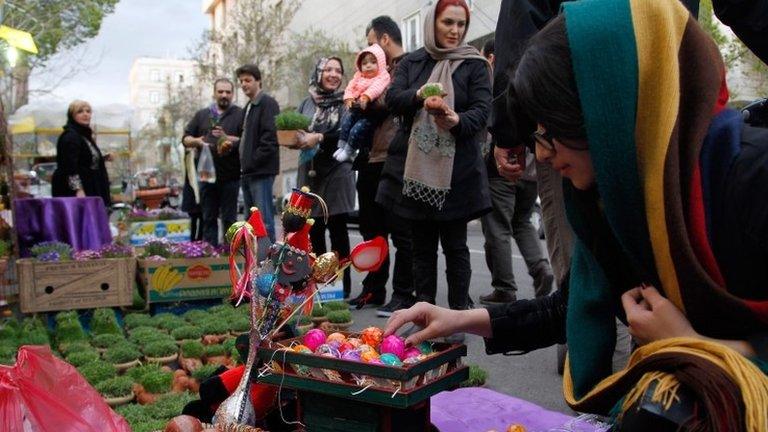
- Published1 October 2012
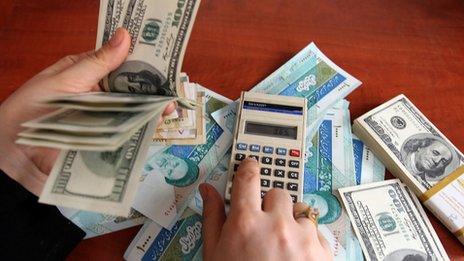
- Published30 September 2012
